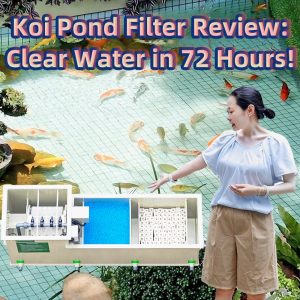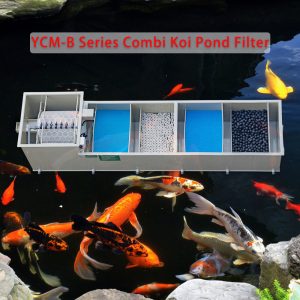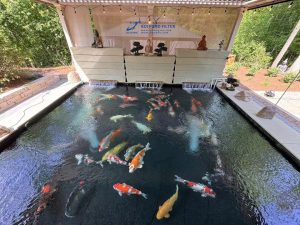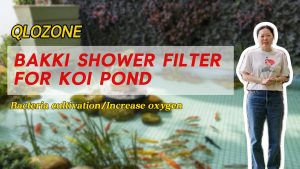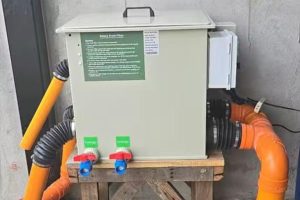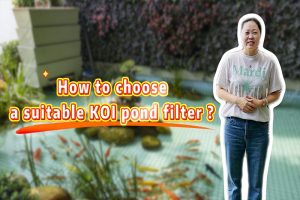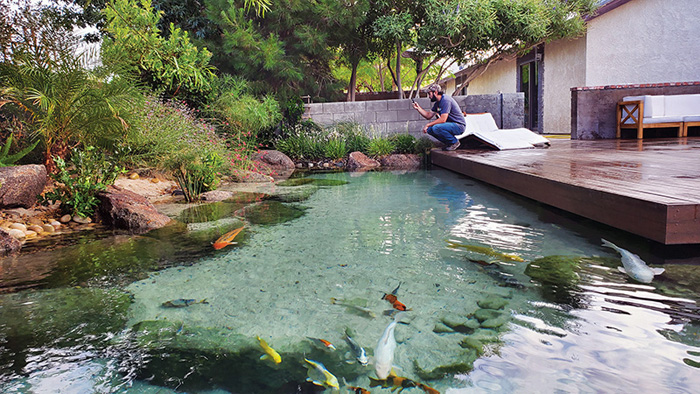
Using ozone in a biological system can produce quite incredible results.
If you’re a pond builder, you’ve undoubtedly already heard of (and possibly already installed) an ozone system to help keep a pond clean.
If not, don’t panic! The science behind ozone, hydroxyl radicals and oxidation-reduction potential (ORP) is complicated, and not too many of us hold an advanced degree in chemistry or molecular physics. The purpose of this article is to discuss the basics of how ozone systems work and present the pros and cons of some of the various methodologies.
What’s an Ozone System?
Ozone, or O3, is a gas that occurs naturally in our atmosphere in the form of oxygen molecules in an electrically charged state. When dissolved in water, ozone decomposes rapidly, forming hydroxyl radicals. Hydroxyl radicals are highly reactive and have a very short lifespan, but they are also potent oxidizers, which are very good at attacking contaminants and safely decomposing organic waste. Once reacted, ozone reverts back to harmless, non-reactive oxygen (O2) molecules.
Although ozone systems are commonly used in swimming pools and wastewater treatment due to their powerful disinfection properties, when properly utilized in a pond, they can actually enhance and improve the efficiency of the ecosystem. According to the U.S. Environmental Protection Agency (EPA), ozone is faster and more effective than chlorine in destroying viruses and bacteria.
So, you might ask yourself, if ozone is such a powerful oxidizer, then why would I want to use it in my pond? Isn’t it going to kill all my beneficial bacteria?
The answer is actually no, as long as the ozone generator is properly sized for your pond and the ORP of the water is kept within the appropriate range. Manufacturers of ozone systems provide recommendations for selecting an appropriately sized ozone generator based on the volume of your pond. Ozonation of water raises the levels of dissolved oxygen (DO), which many aquatic organisms like fish, plants and aerobic bacteria need to grow and thrive. Too large of an ozone system, however, can be harmful to fish and diminish the microbial life that sustains good pond health and water quality.
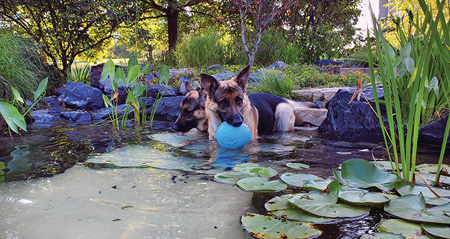
Ozone reduces the need for chemical treatments,making the pond safe for just about everybody.
What’s an Ozone System?
Ozone, or O3, is a gas that occurs naturally in our atmosphere in the form of oxygen molecules in an electrically charged state. When dissolved in water, ozone decomposes rapidly, forming hydroxyl radicals. Hydroxyl radicals are highly reactive and have a very short lifespan, but they are also potent oxidizers, which are very good at attacking contaminants and safely decomposing organic waste. Once reacted, ozone reverts back to harmless, non-reactive oxygen (O2) molecules.
Although ozone systems are commonly used in swimming pools and wastewater treatment due to their powerful disinfection properties, when properly utilized in a pond, they can actually enhance and improve the efficiency of the ecosystem. According to the U.S. Environmental Protection Agency (EPA), ozone is faster and more effective than chlorine in destroying viruses and bacteria.
So, you might ask yourself, if ozone is such a powerful oxidizer, then why would I want to use it in my pond? Isn’t it going to kill all my beneficial bacteria?
The answer is actually no, as long as the ozone generator is properly sized for your pond and the ORP of the water is kept within the appropriate range. Manufacturers of ozone systems provide recommendations for selecting an appropriately sized ozone generator based on the volume of your pond. Ozonation of water raises the levels of dissolved oxygen (DO), which many aquatic organisms like fish, plants and aerobic bacteria need to grow and thrive. Too large of an ozone system, however, can be harmful to fish and diminish the microbial life that sustains good pond health and water quality.
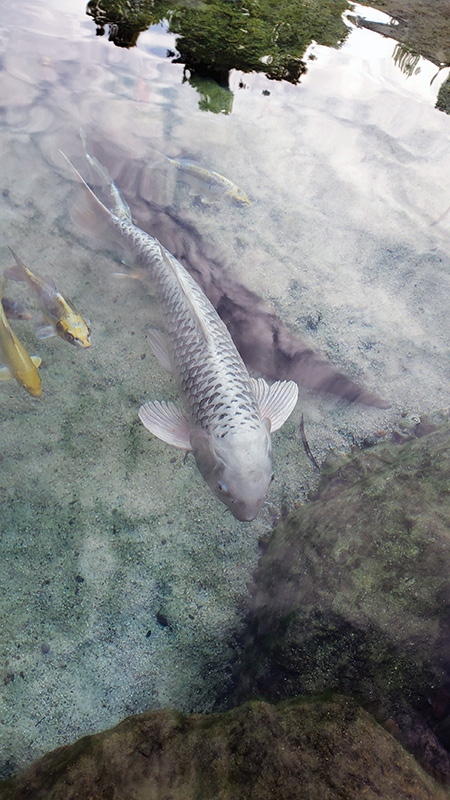
Ozone has made the water quality of this pond pristine; its fish appear to be floating in air.
Better Living Through Chemistry
Ozone gas is typically injected directly into the return lines for a pond, or through a diffusion membrane at the bottom of the pond, such as an air stone. Since the decomposition time of ozone dissolved in 70-degree water is only about 20 minutes (or even faster in warmer water), there is very little time or opportunity for the highly reactive hydroxyl radicals to interact with the beneficial bacteria in the pond’s filter media. When ozone gas is injected into pond water, the chemical reaction is instantaneous. After oxidation, it returns to its original form of oxygen without leaving behind any toxins or byproducts that could hurt the aquatic ecosystem.
Ozone is also highly effective at separating microalgae and other particles from water without the use of clarifiers or coagulants (e.g., polymer clarifiers, chitosan clarifiers, and flocculants like aluminum sulfate). In an ozonated pond, the function of ozone is twofold: to separate particles by the emission of fine bubbles, and to oxidize organic compounds.
This combination of attributes makes ozone systems particularly attractive to pond professionals and homeowners who are constantly looking for solutions to make their koi ponds and water features easier to maintain. However, these systems don’t come without their own caveats and considerations.
Understanding ORP
The dosing of ozone in a pond is measured in oxidation-reduction potential (ORP, sometimes referred to as REDOX, and is commonly expressed in millivolts (mV). Simply put, ORP is a measure of how clean the pond water is in terms of its ability to oxidize contaminants and organic waste. The higher the millivolts displayed on an ORP meter, the more oxidizing potential the water has and, consequently, the more sterile it is.
We do not want pond water to be too sterile, nor do we want the water to be so full of waste that algae blooms and water clarity become an issue. So, what’s the sweet spot? An ORP of under 200 mV indicates the pond is becoming overwhelmed by the organic load. A low ORP can be an indication of low levels of dissolved oxygen, high levels of nitrites or high quantities of waste. Adjusting the ozone output or adding aeration can help increase this ORP level.
Conversely, an ORP over 500 mV means the water is highly oxidative and could indicate that there is either too much ozone being injected into the water, or that a chemical oxidizer (e.g., chlorine) might be present. Exposure to highly oxidative water can be very harmful to koi and beneficial bacteria, and an ORP above 700 mV would kill any type of aquatic life within minutes.
Ideally, we want the ORP in a koi pond to be somewhere in the 350-400 mV range, indicating that the water is very clean and the pond is doing a good job of handling the organic load. This can be achieved with a combination of aeration and ozone injection.
The cleanliness of a pond is a major contributor to the oxidation-reduction potential that is measured in the water. The more organic waste there is in the pond, the higher the biological oxygen demand will be. Since aerobic bacteria require oxygen to break down organic waste, the ORP measurement of a dirty pond tends to be much lower, because the oxygen is getting used up quickly. The addition of ozone can enhance the bacteria’s ability to break down waste efficiently by reducing the biological oxygen demand and raising ORP. Too much ozone, however, may create an environment that is too sterile for the breakdown of organic waste to occur.
Another factor that influences the oxidation-reduction potential of pond water is pH. Although ozone itself will not affect the pH of the water, the ORP measurement will be affected by the pH. When pH is high, you can expect the ORP to be low. When pH is low, your ORP measurement will be relatively high. If you discover your ORP measurement is higher or lower than you expect, start by checking the pH of the water. It might need adjustment.
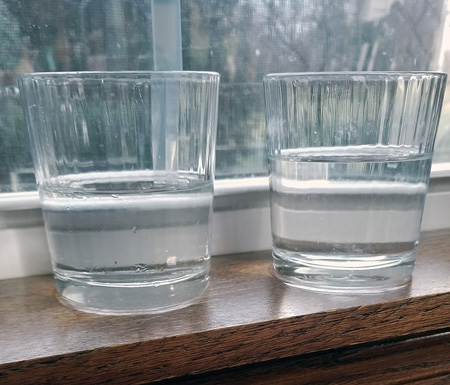
When I compare my own tap water with water from my koi pond, it’s not easy to tell the difference. Can you tell which is which?
Types of Systems
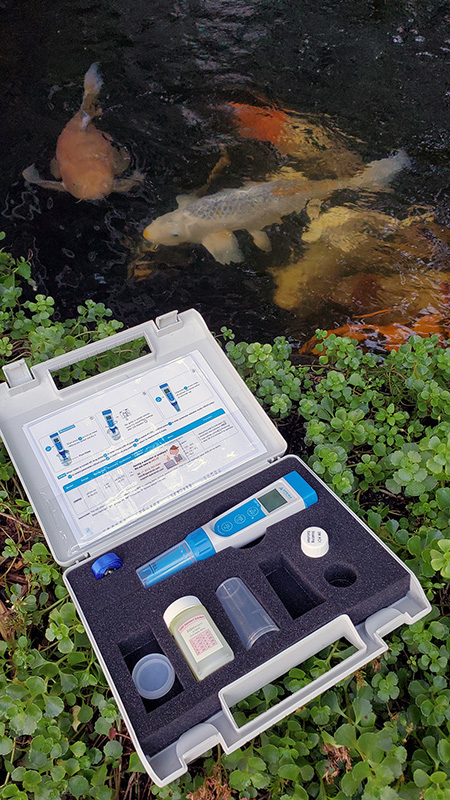
Equip yourself with a proper test kit to check ORP.
How do you decide what kind of ozone generator device to install? There are two primary methods for generating ozone: Corona Discharge (CD) and ultraviolet (UV). CD ozone generation is accomplished by feeding air through an electrically charged reaction chamber. The electrical discharge, also known as the corona effect, splits the oxygen molecules in the air, creating ozone. UV ozone generation occurs when air passes through a chamber containing an ultraviolet lamp, which disrupts the bond of oxygen molecules, allowing the individual atoms to reattach to other oxygen molecules in the form of ozone.
Advantages of Corona Discharge Ozone Generation:
- Higher concentrations of ozone can be created.
- Corona reaction chambers have longer life expectancy.
- More cost effective for large-scale or commercial applications
- Requires less electricity to produce the same quantity of ozone
Advantages of UV Ozone Generation:
- Less maintenance and easier to clean
- Ozone production is not affected by humidity.
- Tends to be less expensive than CD.
- Better suited for smaller, residential-sized applications.
Disadvantages of Corona Discharge Ozone Generation:
- Highly affected by humidity; not as effective above 60% humidity
- Produces nitrogen oxides with negative health & environmental effects
- Tends to be more expensive than UV

In summary, CD ozone generators tend to be more expensive to install but less expensive to operate, and they are best suited for very large ponds or commercial applications. UV ozone generators tend to be less expensive to install but more expensive to operate, and they are best suited for smaller ponds and backyard water features.
Regardless of which ozone generator system you decide is best for your next pond installation, remember that when used correctly, ozone technology is designed to support the microbiology of the pond, not replace it. For optimal water quality and a healthy pond, appropriately sized filtration and aeration are vitally important, along with routine maintenance that includes seasonal cleanouts, removal of organic waste, limiting feeding of koi and other pond fish and periodic chemistry adjustments. If you’re already doing all these things, chances are the addition of an ozone system will have your pond looking better than ever!

